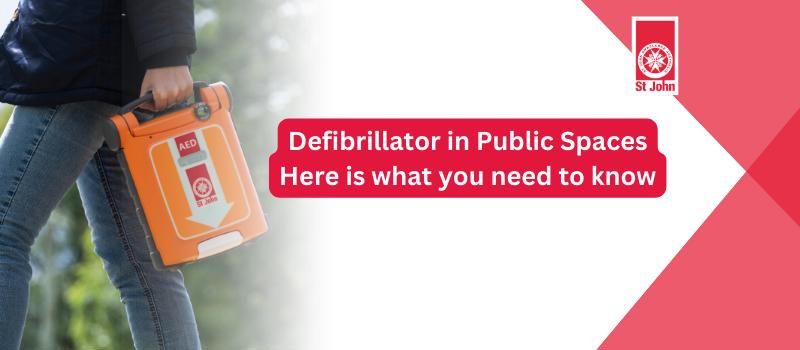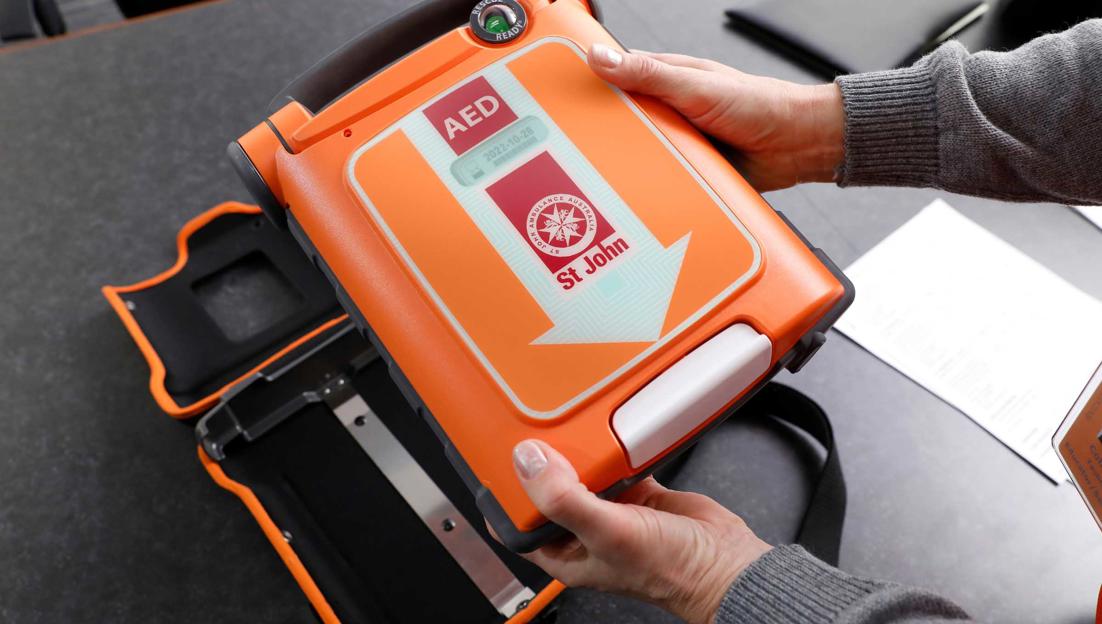Saving Lives: The State of Legislation on Defibrillators in Public Places

About 30,000 Australians experience sudden cardiac arrest out of hospital each year, and between 5-10 per cent survive without immediate CPR and defibrillation, on average. But legislation has not kept pace with the statistics to keep the public safe.
During a sudden cardiac arrest, the heart's electrical system malfunctions, causing the heart to beat irregularly or stop beating altogether. This causes a sudden loss of consciousness, and if not treated immediately, can result in death. Sudden cardiac arrests are often associated with heart disease but can also occur in individuals with no history of heart problems.
If a defibrillator is applied within the first couple of minutes, survival can reach as high as 70%.
So, we know as a fact that every second is critical when sudden cardiac arrest occurs. Bystanders can attend to a sudden cardiac arrest faster than a paramedic ever could, they just need to be able to access the tools required to save a life. “Sudden cardiac arrest can strike anyone, anywhere, at any time. Having a defibrillator on-site allows for immediate intervention, significantly increasing the chances of survival”. Says Mr Gordon Botwright, St John Ambulance Victoria’s CEO.
We have heard many stories of the life-saving impact of defibrillators in public spaces. These devices have been instrumental in restoring heart rhythms and giving people a second chance at life. Seeing individuals whose lives have been saved brings home the importance of having a defibrillator on hand.
South Australia will be the first state in the country to mandate the installation and registration of defibrillators in buildings, facilities, and vehicles across the state as from 2025. In New South Wales, a bill has also been introduced into parliament for review. The bill requires the installation of AEDs in certain buildings and vehicles. While in the remaining states there are no regulations around defibrillators in public buildings yet, the evidence is clear that having a defibrillator available to the public is good practice and they should be as widespread and common as fire extinguishers.

So where should these devices be installed? Defibrillators available to the general public, should be placed at a visible location, where there is a high traffic area with clear signage, like for instance, at the entrance of a restaurant, where staff or customers can easily access in case of emergency. It is not recommended to have it in a locked unit, this can delay or prevent access during an emergency; instead, a case or a holder with pin coded access is available. We recommend 24/7 availability; however, if this is not possible, ensure accessibility during open hours.
It is important to remember that the AEDs should be registered with the state’s defibrillator registry, so it can be located by emergency services when needed. Without registration, the device becomes invisible to the 000 operator, who is unable to direct someone in an emergency to their nearest AED, even if one is nearby. In Victoria, the GoodSAM app immediately alerts registered responders to attend sudden cardiac arrests, with the users directed to the nearest registered defibrillator to bring it to the patient. Without enough registered defibrillators, the chances of an AED being brought to patient who needs it becomes much lower.
It is also essential to note that while most states and territories have regulations in place regarding the placement and maintenance of AEDs, the specific requirements and enforcement mechanisms may differ from state to state.
Defibrillator owners are responsible for ensuring it is properly maintained and cared for. Since most defibrillators perform routine self-testing, looking after the defibrillator is simple, if inspected regularly. St John recommends that the readiness status indicator is checked each time someone walks past the defibrillator. Owners should also take note of when the battery was installed and ensure it is in working condition.
Knowing that public places are equipped with a defibrillator provides reassurance to everyone. It not only demonstrates a commitment to safety and well-being, but it also creates additional security for everyone in the local community.
With the rate of sudden cardiac increasing as the population ages, having a defibrillator in buildings where people gather is not just a recommendation—it is a necessity. By investing in this life-saving equipment, building owners and managers can demonstrate their dedication to providing a safe environment and delivering on their duty of care. “The presence of defibrillators in public places around the country is not just a matter of convenience—it's a matter of life and death. By equipping everywhere with these life-saving devices, we can ensure that everyone is protected in the event of a cardiac emergency”. Concludes Mr Botwright.
 CASE STUDY: Matt was out with his trail running group in October 2021 when his good friend and fellow runner, Dave, was found unconscious. Matt – who had just attended a St John refresher course two weeks prior – sprang into action to perform CPR. 10 minutes in, with Dave still unresponsive, another bystander who also knew CPR took over from Matt. Matt soon spotted an electricity distribution truck driving by. Thinking that there was likely a defibrillator in the vehicle, Matt ran onto the road to flag down the truck. Matt quickly got to work with the truck’s defibrillator. When paramedics arrived, they took over and continued working on Dave. He eventually regained consciousness after having no pulse for nearly 45 minutes.
CASE STUDY: Matt was out with his trail running group in October 2021 when his good friend and fellow runner, Dave, was found unconscious. Matt – who had just attended a St John refresher course two weeks prior – sprang into action to perform CPR. 10 minutes in, with Dave still unresponsive, another bystander who also knew CPR took over from Matt. Matt soon spotted an electricity distribution truck driving by. Thinking that there was likely a defibrillator in the vehicle, Matt ran onto the road to flag down the truck. Matt quickly got to work with the truck’s defibrillator. When paramedics arrived, they took over and continued working on Dave. He eventually regained consciousness after having no pulse for nearly 45 minutes.

